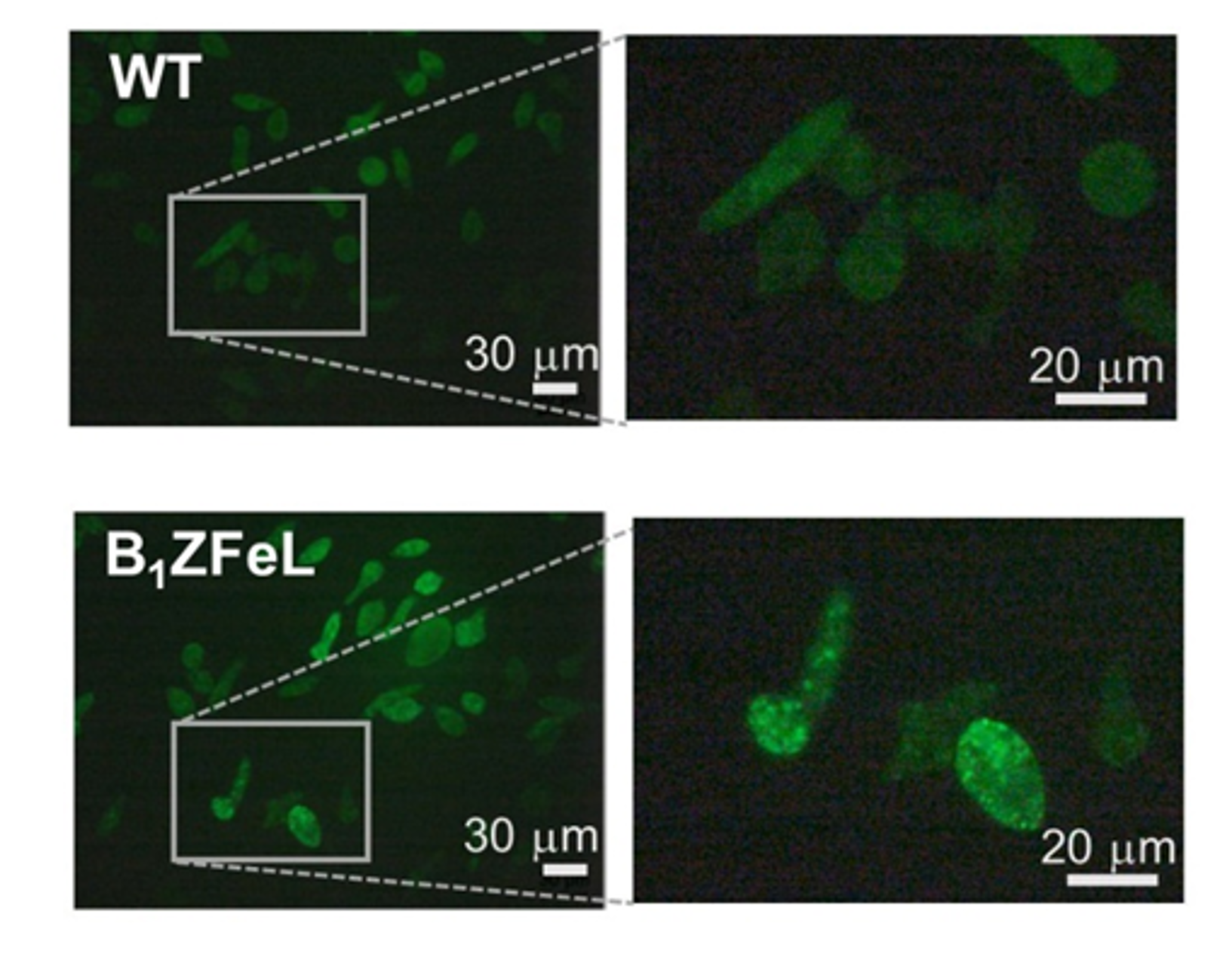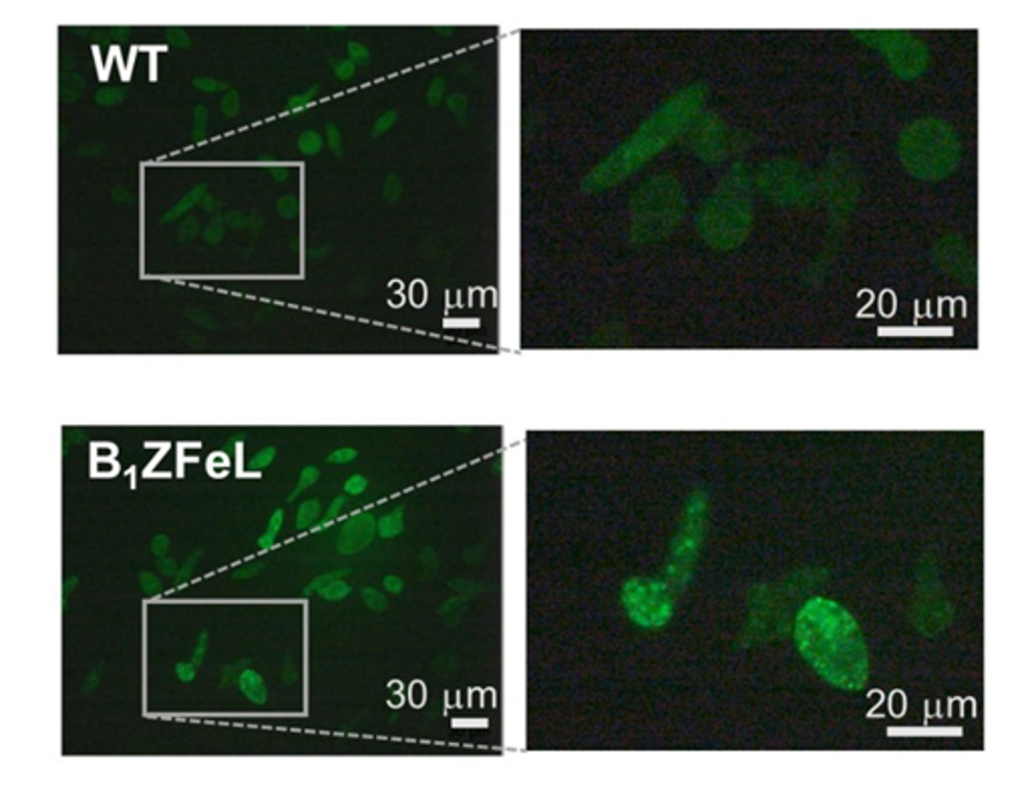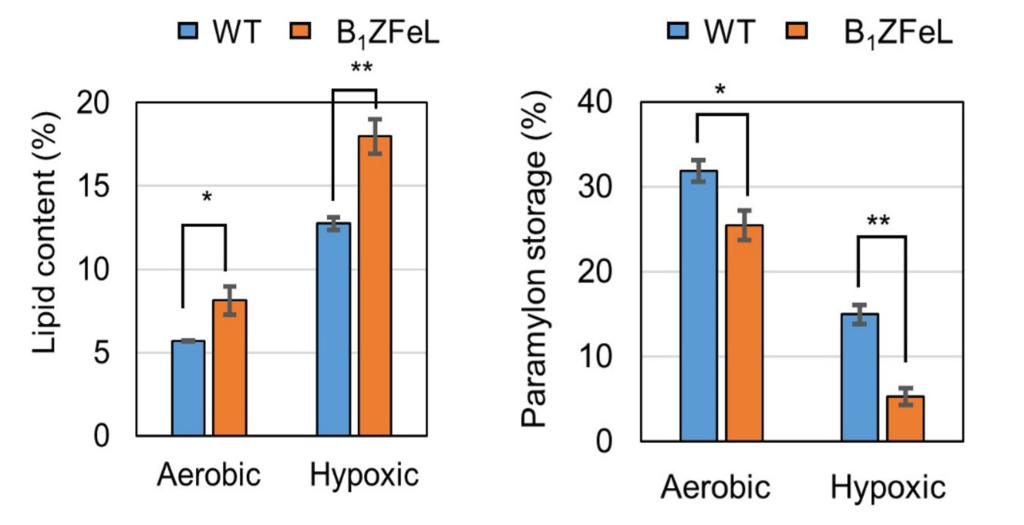
Breeding method to select oil-producing euglena mutants
As part of the research and development program led by Keisuke Goda, Program Manager of the Innovative Program for Advancing Translational Research and Development (ImPACT) led by the Council for Science, Technology and Innovation, Cabinet Office, Government of Japan, Senior Researcher Osamu Iwata of Euglena Co. Professor Keisuke Goda of the Graduate School of Science at the University of Tokyo and his colleagues have developed a breeding method that efficiently produces and selects mutants of Euglena.
Euglena is being applied to foods and biofuels. It is expected to discover euglena with higher nutritional value and higher fuel production efficiency than ever before. However, it is difficult to select euglena with the desired characteristics from a huge number of euglena with slightly different characteristics from individual to individual, and an efficient method has been sought for development.
This research group has developed a method for efficiently selecting Euglena using cell sorting technology. Using this method, they succeeded in obtaining Euglena containing more oil and fat than ever before from a population of Euglena with various characteristics produced by irradiating them with heavy ion beams at the RIKEN Nishina Center for Accelerator-Based Science.
By integrating this selection technique as a technology being developed in parallel, it will be possible to acquire those with useful characteristics from an even more enormous number of euglena. This is expected to help accelerate research on highly efficient biofuels using euglena.
(1) Background and history of research
Microorganisms such as microalgae and yeast can produce cells with various characteristics different from those of wild strains by mutagen treatment. Euglena, the subject of this research, is a type of microalgae found mainly in freshwater around the world (Figure 1). However, compared to other well-studied microalgae (e.g., Chlamydomonas), it has been difficult to obtain Euglena with the desired characteristics because efficient mutagen treatment and individual selection techniques have not been established. In addition, because of this, it has not been sufficiently verified whether it is possible to obtain mutants that exhibit the desired traits. Euglena has already been industrially applied as a food material, but if it becomes possible to breed it efficiently in the same way as rice, corn, and other plants, it can be expected to be used more widely.
(2) Research Details
A research group consisting of Euglena Co., Ltd, the University of Tokyo, and RIKEN has created a genetically diverse population of euglena by combining cell stimulation (mutagen treatment and fluorescent staining), and has succeeded in efficiently selecting euglena with a high oil content, which is the objective of this study.
When cells are irradiated with heavy ion beams as a mutagen treatment, cells with various characteristics appear in the population. In this study, we irradiated Euglena to create a population containing Euglena with various characteristics and developed a method to observe and select individual Euglena cells by using a cell sorter (Figure 2). In particular, we found conditions under which Euglena are less likely to be damaged during the selection process by examining a variety of conditions, which we believe was effective in the selection process. We then used BODIPY staining to visualize intracellular oil and fat, and verified whether we could use differences in fluorescence intensity to select Euglena containing particularly high levels of oil and fat from among the diverse cell populations we had created. As a result, we succeeded in obtaining a euglena mutant that contains about 40% more oil and fat than the wild strain (Figures 3 and 4). Since this euglena mutant produces a large amount of oil and fat, it is expected to be an excellent raw material for the production of green lacewing biofuel and to contribute to the improvement of productivity. In addition, the above results demonstrate that it is possible to select the desired euglena by using the method verified in this study.
(3) Future Development
In this study, we used an existing cell sorter to select Euglena. In the future, we envision that the process will be carried out using the Serendipitor, which is currently under development in this ImPACT program. By using the Serendipitor to obtain more high-quality information from the euglena for selection, it may be possible to select euglena containing large amounts of oil and fat more quickly and accurately. In addition, by devising a visualization method, it will be possible to select euglena with industrially useful characteristics, such as euglena with high vitamin content in addition to oil and fat content. Furthermore, the application of serendipiters to microalgae other than Euglena is expected to accelerate research on functional ingredients and biofuels.
The technological development and demonstration of euglena breeding in this presentation are the results of the ImPACT program (Program Manager Goda) led by Dr. Osamu Iwata's team at Euglena Co. The technology for breeding by heavy ion beam irradiation is being developed at the RIKEN Nishina Center for Accelerator-Based Science as part of the Strategic Innovation Program (SIP) of the Cabinet Office.



Cells with stronger fluorescence contain more oil and fat.

[Terminology]
Creation, selection, breeding...By introducing random mutations into the DNA that contains the genetic information of euglena, a population containing mutants with a variety of characteristics is created. After evaluating the characteristics of each individual in the population, individuals that match the desired characteristics are selected using a cell sorter for breeding.
Heavy ion beam irradiation...Heavy ion irradiation is used for efficient breeding of plants and other organisms because it can induce base deletions by breaking DNA double-strands. They are also used for efficient breeding of plants and other organisms. In this study, the euglena genome is mutagenized by irradiating it with high-energy iron ions accelerated at the RIKEN Nishina Center for Accelerator-Based Science.
Serendipiter...A device that rapidly, accurately, cost-effectively, and minimally invasively discovers and thoroughly analyzes rare but high-impact cells from a huge number (over 1 trillion) of cell populations.
Mutagen treatment...A treatment that induces genetic mutation by exposing organisms to mutagens (ultraviolet rays, chemical mutagens, etc.), resulting in the emergence of mutants.
Cell sorter: A device that observes cells in a flow channel using the fluorescence intensity emitted by the cells as an indicator, and separates the target cells.
BODIPY staining...A staining method that uses the fluorescent dye BODIPY to stain intracellular lipids, BODIPY being cytotoxic-free.
~ Point ~
- Established a method to observe the oil and fat content of individual euglena.
- Succeeded in selecting euglena mutants with high oil content.
- Expected to be applied to biofuel research using the oil and fat produced by Euglena.
Please note that news releases are based on the information at the time of publication and may differ from the latest information.
